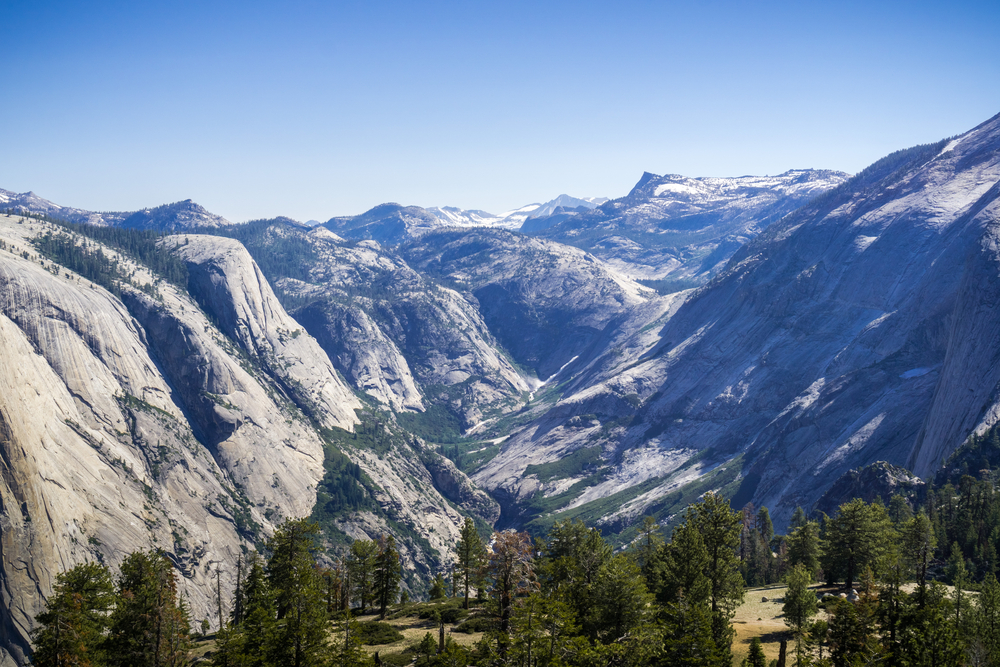Trump Administration Wants to Slash Budget, Double Entry Fees at National Parks
They're PUBLIC monuments

The National Park Service, under the direction of Secretary of the Interior Ryan Zinke, has introduced a proposal (which you have 30 days to comment on!) to dramatically increase the entrance fees at 17 of America’s most popular national parks, in order to “help pay for infrastructure improvements.” Since, in Zinke’s words, “the infrastructure of our national parks is aging and in need of renovation and restoration,” entry fees would more than double during peak season, while Trump’s proposed federal budget would … slash funding for the Department of the Interior by $1.6 billion?
Sounds like the problem here isn’t entry fees, Zinke.
Below are the proposed fee changes:
- Private vehicle entry would increase from $25-30 to $70
- Motorcycle entry would increase from $15-25 to $50
- Entry On foot or by bicycle would increase from $10-15 to $30
- Annual pass would remain the same at $80
The affected parks include Denali, Glacier, Grand Canyon, Grand Teton, Sequoia & Kings Canyon, Yellowstone, Yosemite, Acadia, Rocky Mountain, Shenandoah and Joshua Tree.
The suggestion comes at a time when more and more American families are enjoying the national parks. In 2016, the National Park Services broke its third consecutive all-time attendance record with 331 million visits. This represented a 7.7% increase over 2015; meanwhile, the 307 million visits in 2015 had represented a 5% increase over 2014; and with 292.8 million visitors, 2014 was the year that first broke the 1987 record of 287.2. million visitors.
In fairness to Zinke, increased popularity often calls for improved infrastructure. And based on the national parks I’ve personally visited, they could all use some improved infrastructure for accessibility. But the answer isn’t turning the national parks into a boutique experience that costs as much as Six Flags. The answer isn’t transforming our monuments from an affordable public asset to a pristine land-holding for the few. The answer is increasing the NPS budget to reflect its growing importance to Americans.
And that’s exactly what Congress did in late 2015. They passed a 9% funding increase for the National Park Service, after a year which saw a 5% annual increase in visitors. “The increase in Congressional appropriations comes at a critical time for the National Park Service and will help us to serve the growing number of visitors,” then-NPS Director Jonathan B. Jarvis Jarvis said.
America’s public parks are maintained by all of us, collectively, for the common good of the nation and the environment. I’ve only been to the Grand Canyon once, and I’ve never seen Yosemite or Yellowstone or Denali or basically any other park on that list. But I gladly pay for them with my tax dollars every year, because they’re natural treasures whose preservation I benefit from as a citizen of the planet, because they represent crucial ecosystems for both scientific study and conservation, and because that’s how a civil society works. It isn’t pay to play.
Public comment on this proposal is open for the next 30 days. All your comments on Zinke’s previous pet project, a “review” meant to shrink or eliminate national monuments, undoubtedly frightened him away from more radical proposals than the still-foul ones he proposed. Let’s do it again.
(Via CNN and the National Park Service; image via Shutterstock)
Want more stories like this? Become a subscriber and support the site!
—The Mary Sue has a strict comment policy that forbids, but is not limited to, personal insults toward anyone, hate speech, and trolling.—
Have a tip we should know? tips@themarysue.com